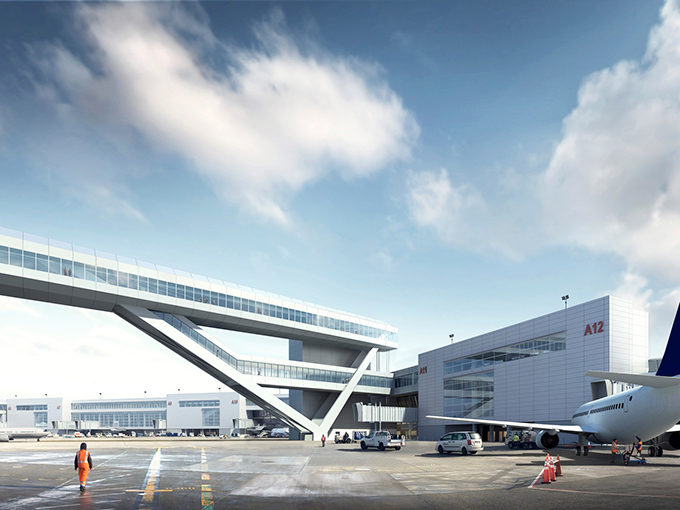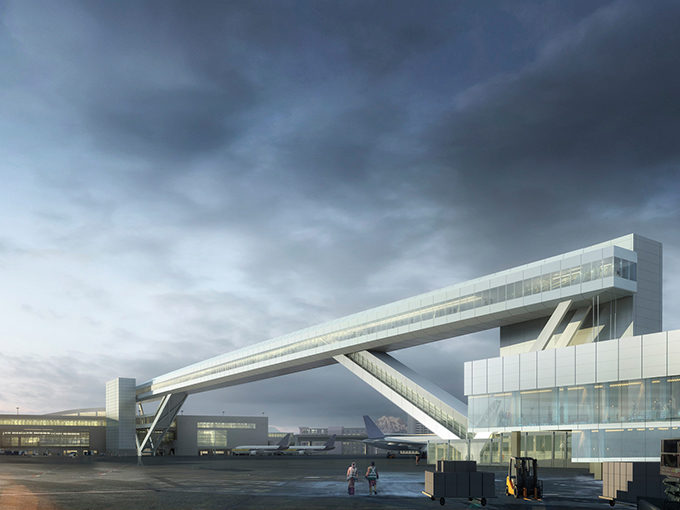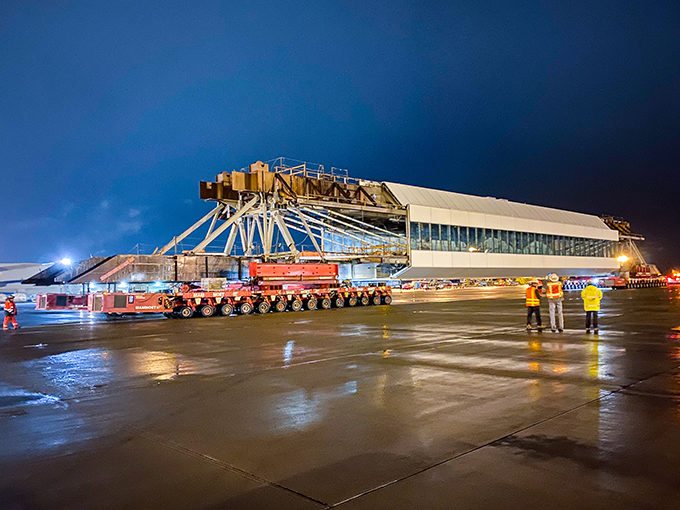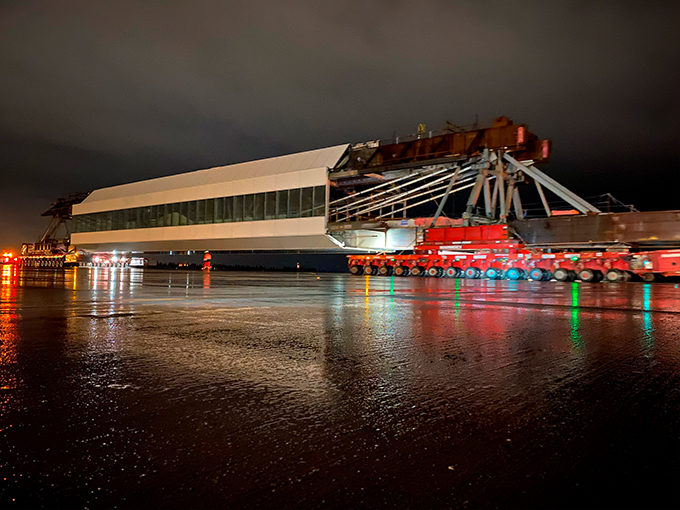



Image © SOM
Image © SOM
The center span of the aerial walkway was moved down the airports center runway and lifted into place in January. Photo © Clark Construction
The 320-foot, 1,500-ton center span was transported by four self-propelled modular transporters. Photo © Clark Construction
The following excerpt is translated from German.
At the Sea-Tac [International Airport] near Seattle, the eastern satellite terminal is connected to the main building by means of a walking bridge. The connection is so high that a Boeing 747 can pass under it.
. . .
A consortium of the planning offices Skidmore, Owings & Merrill (SOM) and Miller Hull Partnership was selected in 2015 together with the construction company Clark Construction Group to renovate and expand the International Arrivals Facility (IAF) of the Sea-Tac. This also includes the aerial walkway.